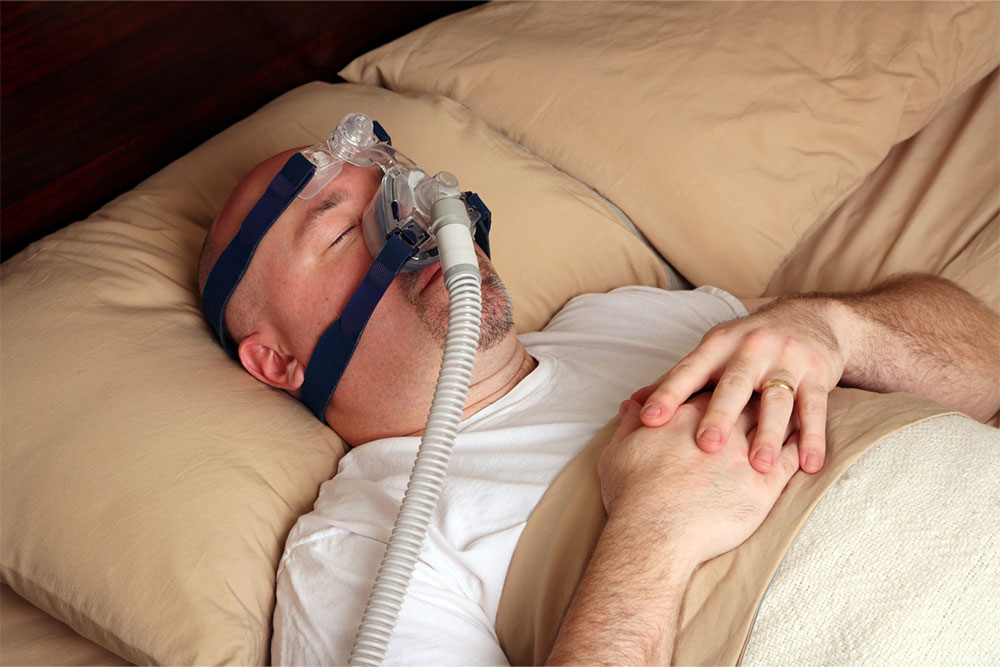Sleep apnea – Causes, symptoms, diagnosis, and treatment
Sleep apnea – causes, symptoms, diagnosis, and treatment
Sleep apnea is a potentially life-threatening sleep disorder that affects about 22 million people in the country. This condition occurs when one’s breathing stops repeatedly while asleep, and this phenomenon leaves them tired and sleepy the next day. Those with untreated sleep apnea stop breathing repeatedly while sleeping which implies that the brain and the rest of the body might be deprived of the required oxygen.
To ensure timely detection of the condition, it is essential to understand what causes sleep apnea, its warning signs and symptoms, how it’s diagnosed, and the various treatment methods available.

Causes of sleep apnea
There are two types of sleep apnea: obstructive sleep apnea (OSA) and central sleep apnea (CSA). OSA is the more common type of sleep apnea and is caused by a blockage of the airway. This occurs when the soft tissue in the back of the throat collapses during sleep. Meanwhile, In CSA, the airway remains clear but the brain fails to send a signal to the muscles to breathe; this occurs due to instability in the respiratory control center.
The major factors that contribute to the blocking or collapse of the airway (in OSA) include the following.
- Brain function
In CSA, the neurological controls for breathing are the underlying cause of the condition. When these are faulty, they cause the control and rhythm of breathing to malfunction. In the majority of cases, CSA is associated with underlying medical causes, such as a stroke or heart failure, a recent ascent to high altitude, or the use of pain relief medications. - Muscular changes
When asleep, the muscles that keep the airways open tend to relax, and so does the tongue, which causes the airway to narrow. Usually, this does not cause major problems, but in sleep apnea, it can. - Physical obstructions
In certain cases, the additional thickened tissue or excessive fat stored around the airway can restrict the airflow. In case the air does squeeze past, it causes loud snoring. This is usually associated with OSA.
Other factors that contribute to the risk of developing sleep apnea include:
- Obesity
- Supine sleeping
- Large neck circumference
- Menopause
- Recent weight gain
- Smoking
- Down syndrome
- Large tonsils or adenoids
- Family history of sleep apnea
- Recessed chin or a large overbite
Symptoms of sleep apnea
Understanding the symptoms and warning signs of sleep apnea plays a major role in diagnosing the condition and seeking timely treatment. The symptoms of OSA and CSA can overlap. As a result, the diagnosis can be difficult when identifying the type of sleep apnea. The most common signs and symptoms of OSA and CSA are:
- Gasping for air during sleep
- Loud snoring
- Instances where one stops breathing during sleep
- Morning headache
- Awakening with a dry mouth
- Excessive daytime sleepiness (hypersomnia)
- Difficulty staying asleep (insomnia)
- Irritability
- Difficulty paying attention while awake
Diagnosing sleep apnea
The doctor can evaluate based on the signs, symptoms, and sleep history. In certain cases, sleep disorder centers are recommended where a sleep specialist will determine whether or not one would need further evaluation. An evaluation usually involves overnight monitoring to check how one breathes and other body functions. The tests to detect sleep apnea include:
- Nocturnal polysomnography
For this test, an equipment that monitors the heart, lungs, brain activity, arm and leg movements, breathing patterns, and blood oxygen levels will be attached to the body. - Home sleep tests
These are quite simple tests and can be used at home to diagnose sleep apnea. These tests usually check the heart rate, blood oxygen level, airflow, and breathing patterns.
Treating sleep apnea
If diagnosed with a milder form of sleep apnea, the doctor might recommend making lifestyle changes, such as losing weight or quitting smoking. In case these treatment methods do not improve the symptoms, the following treatment options are prescribed.
- Continuous positive airway pressure (CPAP)
If you have moderate to severe sleep apnea, a CPAP machine can prove to be quite beneficial. The machine does an excellent job of delivering air pressure through a mask while one is asleep. With the CPAP, the air pressure is slightly greater than the surrounding and is enough to keep the upper airway passages open. This prevents apnea and snoring. - Oral appliances
Certain dental devices help to keep the airway open while sleeping. - Other airway pressure devices
If the CPAP machine is uncomfortable, one can opt for a different type of airway pressure device that automatically adjusts the pressure while asleep. - Surgery
Doctors recommend opting for surgery only when other treatments fail. The surgical options include tissue removal, tissue shrinkage, jaw repositioning, implants, nerve stimulation, and tracheostomy.
Lifestyle changes to treat sleep apnea
Traditional methods for treating sleep apnea are quite effective, but they can be uncomfortable. The alternative treatments to control sleep apnea are equally effective in the symptoms. They are:
- Losing weight
Obesity is one of the major risk factors when it comes to sleep apnea. So, the best way to treat sleep apnea would be to maintain a healthy weight. Stick to a healthy diet plan and exercise regularly. - Yoga
Yoga can improve respiratory strength and oxygen flow. It also reduces the number of sleep interruptions that one might usually experience. - Changing position
Studies have revealed that sleeping on one’s back can intensify the symptoms of sleep apnea. So, discuss body positioning and sleep apnea symptoms with the doctor to find the right position to sleep in.
- Avoid alcohol and smoking
Alcohol tends to relax the throat muscles that control breathing; this can cause snoring and interrupted sleep. Moreover, it also causes inflammation in the airways, which, in turn, blocks the airflow. Similarly, tobacco can also lead to inflammation and swelling in the airway which can worsen sleep apnea. So, the bottom line is to quit smoking and alcohol completely.
This article is for information purposes only. Always consult and seek the advice of your physician/licensed healthcare professional with any questions regarding a medical condition or medication.


